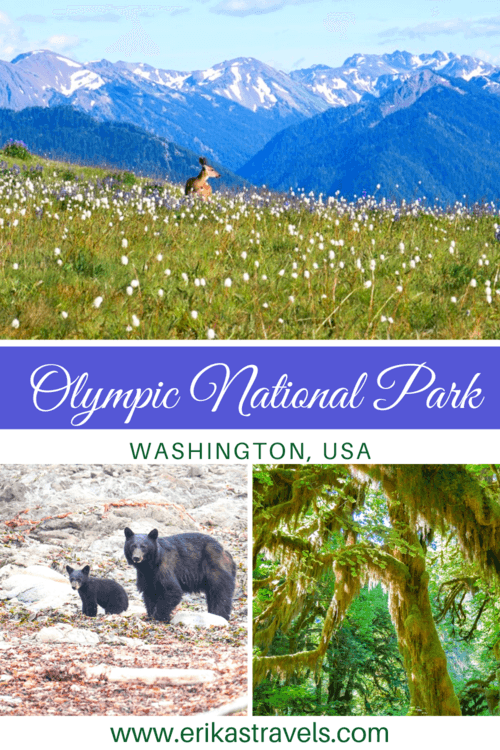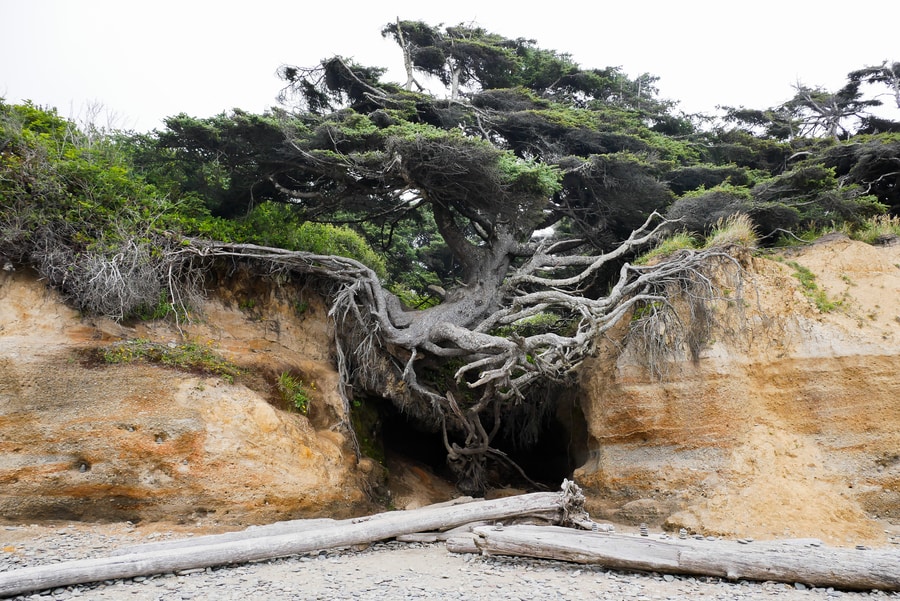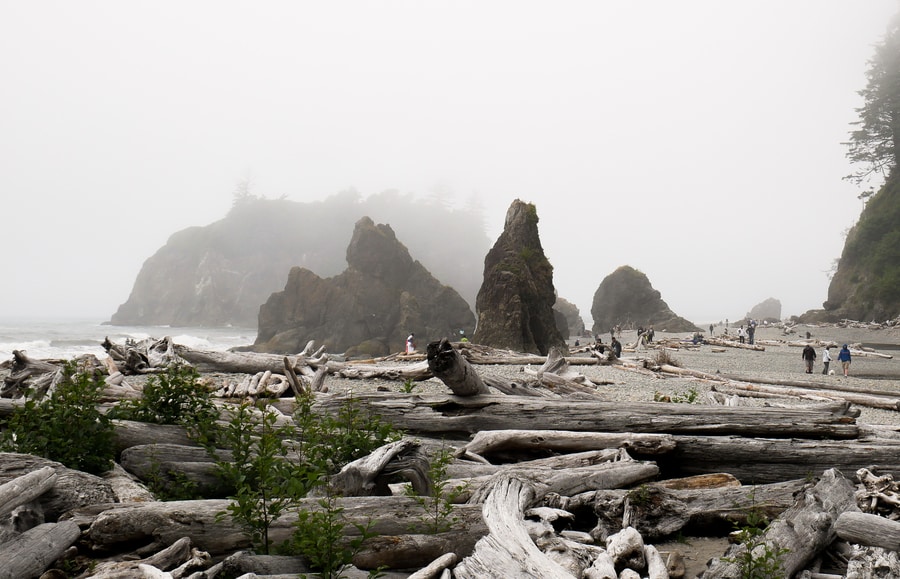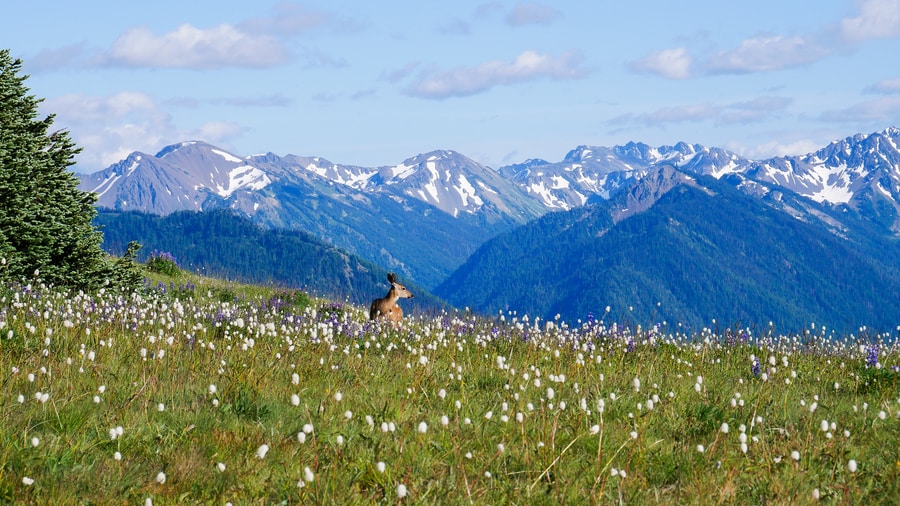
Olympic National Park Travel Guide
Olympic National Park is one of the Pacific Northwest’s great wilderness destinations.
Encompassing large swaths of a peninsula that shares its name, the UNESCO-recognized park boasts a temperate rainforest, glaciated mountain peaks, and lonely wind-battered beaches.
The national park is one of the most popular places to visit in Washington State. Still, it is far enough from Seattle that it avoids being inundated with day-tripping tourists.
Ninety-five percent of Olympic National Park is designated wilderness. Its untouched reaches shelter pristine landscapes and mile upon mile of hiking trails. With its pounding surf and towering peaks, the park is a haven for hikers, photographers, nature-lovers, and solitude-seekers.
THINGS TO DO IN OLYMPIC NATIONAL PARK
Olympic National Park is one of three national parks in Washington State. It is a sprawling wilderness area that hosts a diverse array of attractions within its confusing and loosely-defined borders.
While typical images of the national park feature its Tolkienesque temperate rainforest, the park also showcases alpine highlands, tranquil lakeshores, and a wild coastline that feels largely disconnected from the outside world.
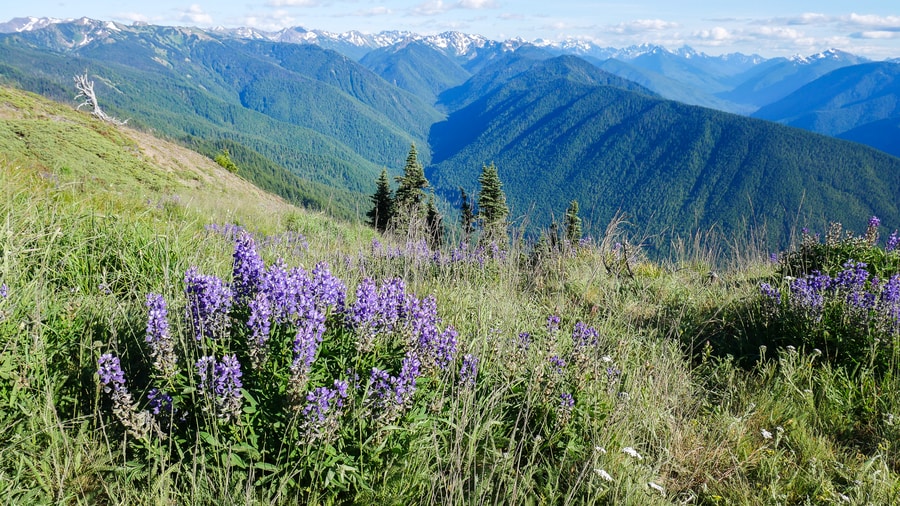
The national Park can be roughly divided into three main areas: the sweeping beaches lining the Olympic Peninsula’s Pacific shoreline, the moss-covered forests along the park’s western edge, and the alpine scenery that covers much of the park’s interior.
When we visited Olympic National Park, Dan and I began our weekend itinerary with visits to the peninsula’s beaches and moss-covered rainforests. Then—after spending a night on the sandy shores of South Point near Lake Ozette—we headed into the peninsula’s mountain-clad interior.
OLYMPIC PENINSULA BEACHES
The coastal section of Olympic National Park encompasses many of Washington’s most beautiful beaches. It lies adjacent to the Makah and Quileute Indian Reservations and contains large portions that are inaccessible by car.
While the Olympic Peninsula’s beaches don’t quite match the southern Oregon coast‘s dramatic marriage of sand and surf, their isolation and ruggedness makes them no less special.
-
KALALOCH BEACH
Kalaloch is the southernmost section of beach within Olympic National Park. Separated from the rest of the park by private and tribal lands, Kalaloch beckons travelers with its uninterrupted stretch of sand.
After a 3.5 hour drive from Seattle, Dan and I ordered lunch from the Kalaloch Lodge and took our picnic to the beach. The Kalaloch Lodge is one of four different Olympic National Park lodges. It overlooks one of the longest and most accessible stretches of sandy beach in the national park.
The most notable attraction in Kalaloch is the oft-photographed Tree of Life.
The Tree of Life is an anomaly of nature. The soil below the tree has disappeared completely. But despite the fact that significant erosion has starved its roots of nutrients, the tree continues to thrive. It is a testament to nature’s resilience.
-
RUBY BEACH
Ruby Beach lies just north of Kalaloch, along Highway 101. It is one of Washington State’s most iconic and photographed beach destinations.
Strolling along the rocky shores of Ruby Beach is one of the top things to do in Olympic National Park. The picturesque beach is adorned with rock monoliths and offshore islands. Polished black stones blanket its sands and and liberally-strewn driftwood embellishes its shores.
The beach is an excellent road trip destination that reminds me of the towering sea stacks in southern Oregon’s Samuel H Boardman State Park.
Unlike many of the Olympic Peninsula’s other coastal areas, Ruby Beach is easily accessible by car. A short 0.2-mile path leads down to its rocky beach.
-
RIALTO BEACH
Rialto Beach is another Olympic Peninsula road trip destination that is easily accessible by car. The black-sand beach—located adjacent to the tribal fishing town of La Push—features a rocky shore, giant driftwood logs, and pounding waves. On clear days (a rarity along the Olympic Peninsula’s western edge) it affords views of offshore sea stacks. Due to its crashing waves, Rialto Beach is one of the best surf spots in Washington State.
The walk from Rialto Beach to Hole-in-the-Wall is a popular Olympic National Park hike. The walk follows Rialto Beach’s tree-lined shores and reveals mile upon mile of massive driftwood logs.
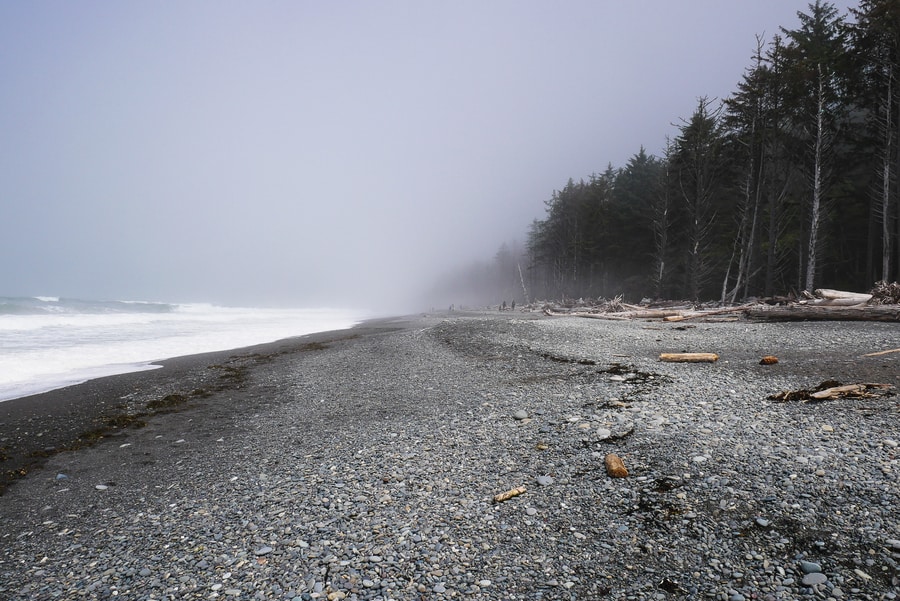
When Dan and I visited Rialto Beach, high tide and inclement weather precluded us from seeing the sea stacks near Hole-in-the-Wall.
Nonetheless, we enjoyed walking along the beach’s pebble-clad shores and listening to the soundtrack of pounding surf.
-
OZETTE LAKE LOOP
Since Dan and I waited until the last minute to book our backcountry permits, the popular camping areas near Rialto Beach and Second Beach were all booked up. Our only viable camping option was to pitch our tent along Ozette’s Sand Point Beach.
As it turns out, it was a fantastic option.
Though Lake Ozette is one of the largest features in Olympic National Park, its far-flung location makes it a less-trafficked attraction. Compared to Rialto Beach and Ruby Beach, the beaches near Lake Ozette receive very little traffic. They are more desolate and a little wilder.
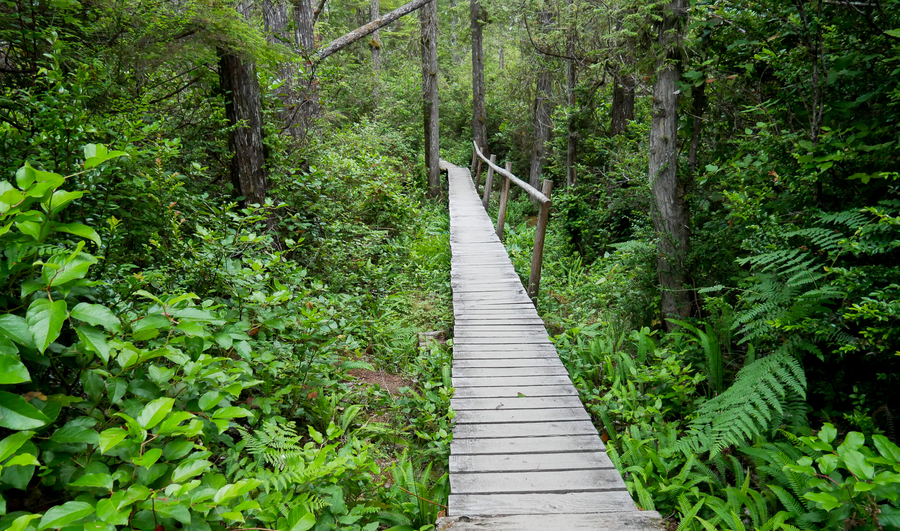
Most people who visit the area embark on the Lake Ozette loop—a nine mile trail that features forest, seashore, and abundant wildlife. Lake Ozette’s loop trail follows a boardwalk for three miles. After reaching the ocean, the trail then continues along the sand for another three miles, before returning to the trailhead via a different path. The triangle-shaped trail is roughly nine miles in length.
Ironically and despite its name, the loop provides little more than a passing glimpse of Lake Ozette’s placid waters.
OLYMPIC PENINSULA RAINFORESTS
Olympic National Park is home to some of the Pacific Northwest‘s most enchanting forest. These supersaturated wooded areas are a verdant matrix of of moss, ferns, and drooping tree branches. The trees look as though they belong in a fairy tale or mythical fable. I half expected a Sasquatch to appear amidst the towering cathedrals of moss.
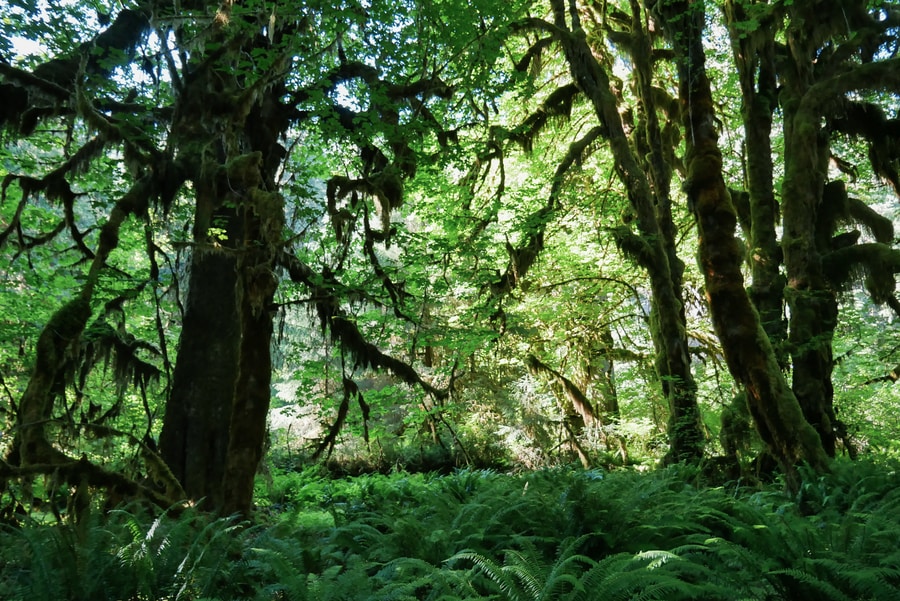
The Hoh Rainforest is Olympic National park’s most popular forested attraction. But travelers looking to get off the beaten path can explore the less crowded areas around Quinault as well.
-
HOH RAINFOREST
The peninsula’s Hoh River area offers hiking opportunities, a visitor center, and some of the best examples of temperate rainforest in North America. Walking along the area’s spooky forested paths is one of the top things to do in Olympic National Park.
Hall of Moss trail is the most popular Hoh Rainforest hike. The gentle 0.8 mile loop highlights some of the area’s most impressive moss-carpeted trees. Alternatively, hikers looking for a longer tree-lined hike can embark on the 17 mile Hoh River trail to Glacier Meadows.
Like the Redwoods and giant Sequoias of California, Olympic National Park’s Hoh Rainforest is a woodsy experience that is not to be missed.
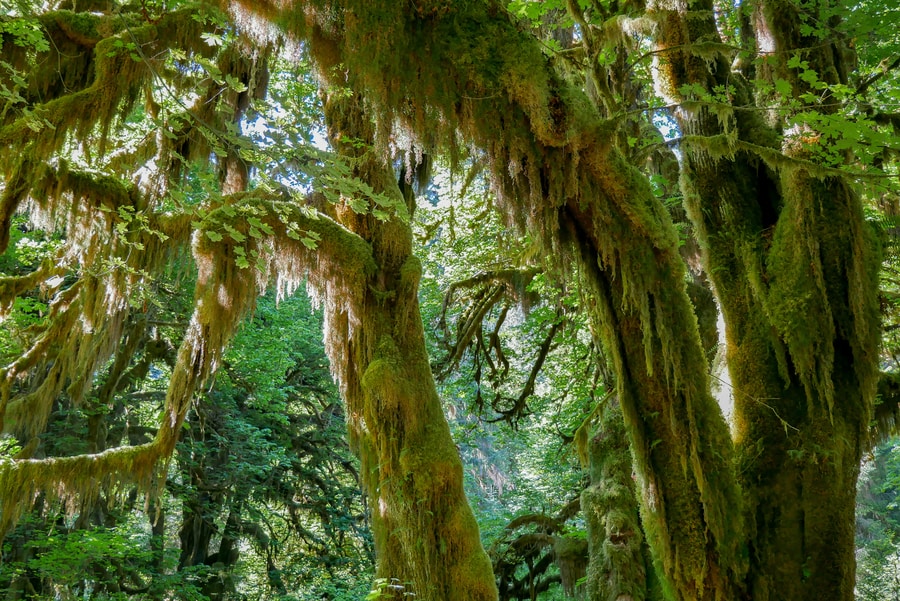
I’ve visited the Hoh Rainforest twice: once in the rain, and once on a clear sunny day. The two experiences were drastically different. On my most recent visit, dappled sunlight gave the ethereal rainforest an entirely different feel. And in truth—while the mosses were still an impressive sight to behold—our sunny-weather visit lacked some of the Hoh’s fairytale magic.
Dan and I agreed that the primeval Hoh Rainforest is best visited on a rainy and overcast day.
Luckily, the Olympic Peninsula is exceptionally dreary.
So chances are, you’ll be in luck.
-
QUINAULT RAINFOREST
The enchanting Quinault River Valley is one of Olympic National Park’s least crowded corners. The valley’s forested hillsides surround Lake Quinault’s glacial waters. They are home to some of the oldest and tallest Sitka spruce and Douglas fir trees in existence.
A number of short hiking trails begin near Lake Quinault Lodge. The shortest of these consists of a half-mile walk through 500 year old Douglas firs.
Though we passed Quinault en-route to the Olympic Peninsula’s western coast, we didn’t hike along any of the area’s pathways. Our limited weekend itinerary forced us to choose between the park’s many attractions.
On my next visit, however, I intend to make the Quinault area a priority.
NORTHERN OLYMPIC PENINSULA
The northern Olympic Peninsula contains many of the national park’s most notable attractions. It is a place where soaring mountains shelter sapphire lakes, and where old growth forests conceal silvery waterfalls. It is also the gateway to Marymere Falls, Hurricane Ridge, and the Sol Duc Hot Springs.
If you only have time for one area of the park, I suggest you focus your time on the mountainous northern region.
-
LAKE CRESCENT
As Highway 101 heads northward from the coastal areas, it skirts the blue-green shores of Lake Crescent. The crystal clear lake is a popular recreation area. Its shimmering trout-stocked waters invite swimmers, boaters, and fishing enthusiasts.
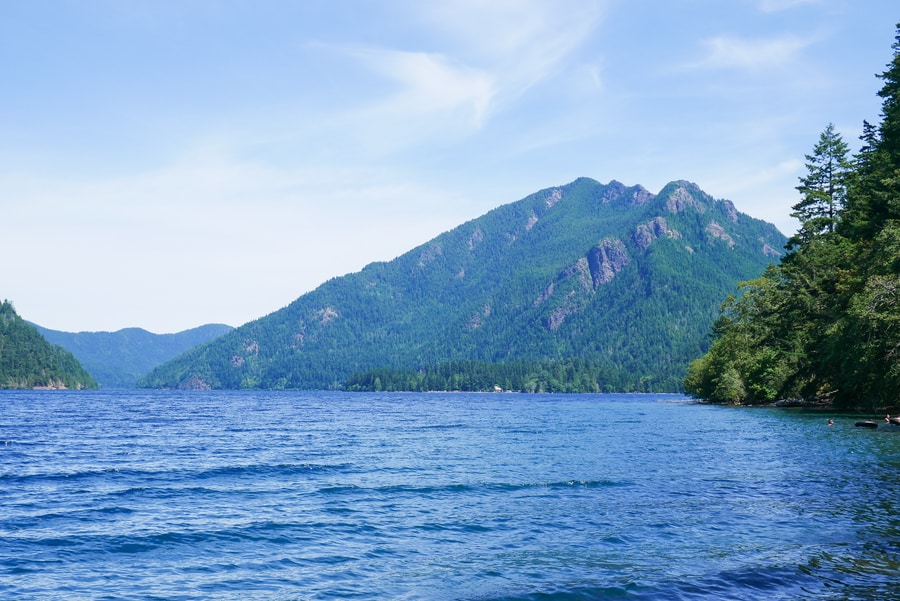
A number of short hikes— including the popular Marymere Falls trail—leave from the lakeshore. The short two mile roundtrip waterfall trail leads to a picturesque 90ft cascade.
-
OLYMPIC AND SOL DUC HOT SPRINGS
The Olympic Peninsula is home to both the rustic Olympic Hot Springs and the established Sol Duc Hot Springs Resort. The hot springs are among the most renowned in Washington State. Soaking in their warm waters is a top thing to do on the Olympic Peninsula.
I’m a sucker for hot springs. In my travels around the Pacific Northwest, I’ve often gone far out of my way to reach them. I’ve found pure bliss in the thermal waters near the Alvord Desert, the Oregon Outback, and the Cougar Reservoir.
But I didn’t have the time or opportunity to visit any of the Olympic National Park hot springs during my visit to the park.
So I’ve added them to the top of my travel wish-list for when I return.
-
HURRICANE RIDGE
From the town of Port Angeles on the Olympic Peninsula’s northern edge, a scenic road leads to Hurricane Ridge. The ridge is among the top places to see in Olympic National Park, and just about the only major attraction that can be visited as a day trip from Seattle.
The Olympic Mountains rise nearly 8,000 feet above sea level. They contain some of the most impressive alpine scenery in Washington. Though they are notably shorter than the mountains in the state’s Cascade Range, the Olympics are every bit as impressive as Mount Rainier and Mount St Helens.

Hurricane Ridge provides unobstructed views of the snow-dusted mountains. From the visitor center, hikers have access to a wide range of trails—from short scenic ridgeline loops, to multi-day backcountry treks.
OLYMPIC NATIONAL PARK MAP
The Olympic Peninsula’s vast swaths of wilderness make it a wonderland for lovers of unspoiled nature and backcountry hiking. For travelers with limited time, however, the park’s roads can be frustrating to navigate. There are few roads linking destinations within the park, and those that exist are often indirect and inconvenient.
Thus, traveling between Olympic National Park’s main attractions is often time consuming.
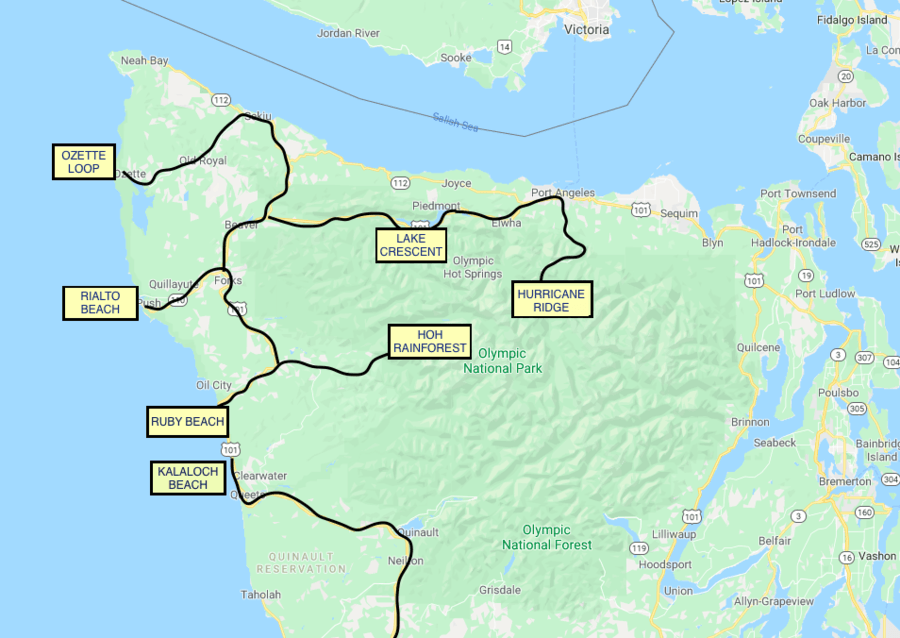
When Dan and I traveled to the Olympic Peninsula, we followed a clockwise loop from Seattle. In total—due to the lack of direct roads—the drive took us more than twelve hours.
If you’re planning on spending a weekend in Olympic National Park, I suggest you study the park map beforehand and draw up an itinerary that includes the top places you wish to visit.
Because unless you have a week or more to explore, it can be difficult to visit all of the Olympic Peninsula’s top attractions in a single trip.
LODGING AND CAMPING IN OLYMPIC NATIONAL PARK
Olympic National Park is one of the largest designated wilderness areas in the United States. As such, backcountry camping is the best way to enjoy its wild and scenic areas.
Hikers can obtain backcountry permits online, at Recreation.gov.
For travelers seeking a bit more comfort, Olympic National Park hosts four fantastic lodging options within its boundaries (the Lake Quinault Lodge, Crescent Lake Lodge, Log Cabin Resort, and Sol Duc Hot Springs Resort).
Additional lodging options are available in Forks, Port Angeles and Sequim.
OLYMPIC PENINSULA WILDLIFE
Olympic National Park’s distinct and highly biodiverse ecosystem is rich in plant and animal life. The park is home to one of the last remaining large tracts of intact primeval forest in the lower 48 states. These moist forests provide essential habitat for a large variety of animals.
The park’s valleys and meadows host deer, elk, cougars and bears. Just offshore, the Pacific Ocean is home to whales, sea lions, and sea otters.
When Dan and I visited Olympic National Park, we spotted three bears near our camping spot on Sand Point Beach. The family of bears purportedly lives in the area and scavenges for food that campers leave behind.
While we were excited to see the bears, our encounter with potentially dangerous wildlife was a reminder that nature still rules supreme on the Olympic Peninsula.
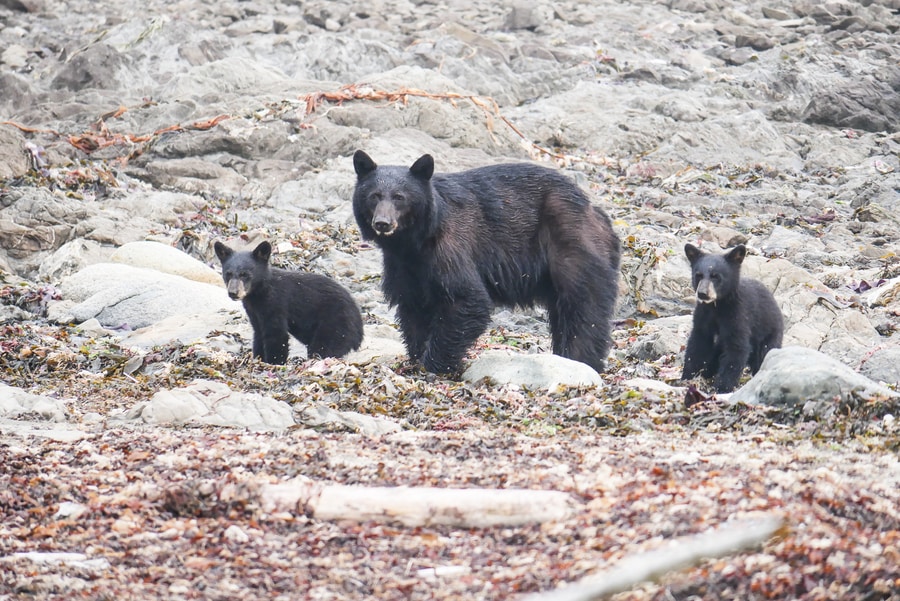
As always, please respect the wildlife habitat and do not feed animals. Should you need them, bear canisters are available in the Port Angeles Wilderness Information Center (WIC).
WHEN TO VISIT OLYMPIC NATIONAL PARK
Though solitude and lack of crowds make winter an enjoyable time to explore the remote wilderness of the Olympic Peninsula, the best time to visit the national park is late June through September. During summer months, temperatures are usually warm, most roads and facilities are open, and visitors have access to a full range of programs and activities.
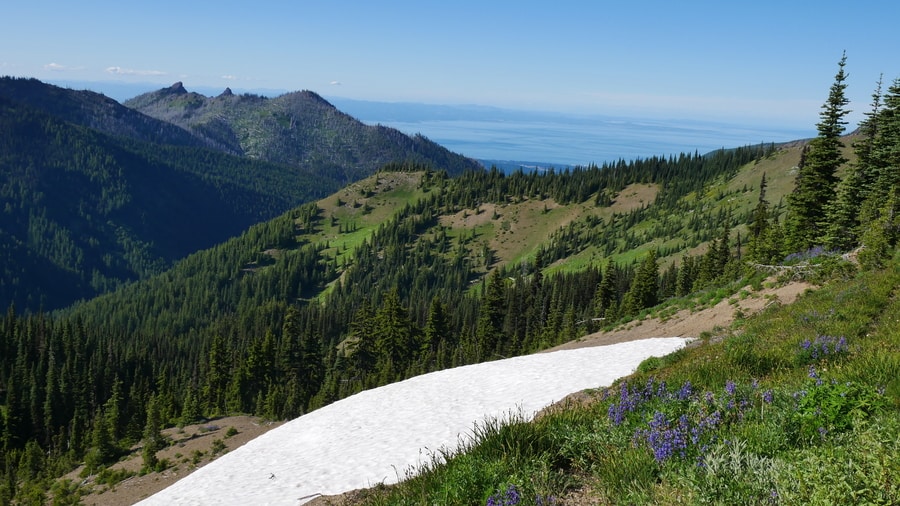
In winter months, the peninsula gets pummeled with rain. At higher elevations, snow means that many of the trials are inaccessible.
With that being said, keep in mind that weather on the Olympic Peninsula is highly variable. Even on the sunniest days, it is common for some parts of the park to experience rainfall.
The peninsula is, after all, one of the rainiest places in the United States.
****
Home to three entirely different ecosystems and a diverse array of flora and fauna, the Olympic Peninsula showcases the Pacific Northwest’s rugged and untamed wilderness at its best. It is remote, wild, and still largely unadulterated by human habitation.
For stressed-out Seattleites, it provides a laid-back escape from the hubbub of city life.
There’s no easy or direct way to travel around the Olympic Peninsula. With a series of unlinked roads that stretch about the landscape like disconnected tentacles, it is a place where patience is necessary and prioritization is key.
Of course, if accessing the Olympic Peninsula from Seattle were easier, the park’s shores and mountaintops would likely be inundated with tourists. The peninsula’s limited infrastructure and relative isolation is pivotal to its survival as an outpost of beauty and tranquility.
Most nature-lovers would like to keep it that way.
___________________
